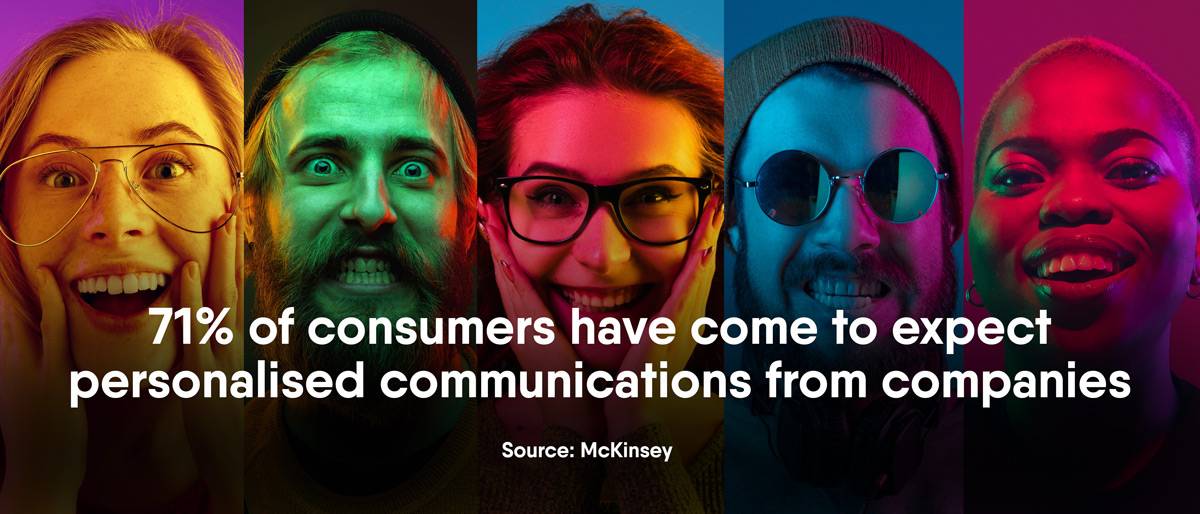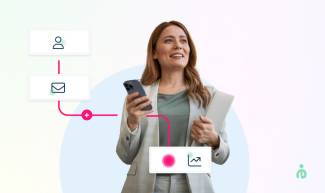The Power of Personalised Communication
For the longest time, we have come to realise that word-of-mouth trumps every other form of traditional advertising. McKinsey estimates that it's responsible for between 20 to 50% of purchasing decisions. Ever wondered why? Two words — trust and targeting.
Getting lost at sea already? This post is not about word-of-mouth marketing. It’s about how the infinitely cool duo of modern marketing — trust & targeted messaging — can be replicated at scale with the help of a more precise marketing strategy called personalised communication.

Why is Personalised communication important?
In today's commercial landscape, competition for consumer attention is increasingly intense. The startup space is awash with VC funds that fuel a massive marketing budget, which doesn’t help either. The competition for digital eyeballs is getting more intense by the minute. Take Netflix for instance. The tech giant pioneered the rise in streaming culture. But, following intense competition (sometimes dubbed “the streaming wars”), it has seen its market share fall sharply to a little above 25%.
Consumers have never been spoilt for so much choice in the market. And like has been reinforced in several surveys, personalisation is now, more often than not, the draw for most consumers.
To put it simply, customers want ad content that’s specific to their personal needs, and curated for them, very unlike the regular catch-all messaging of the past. In this study by McKinsey, over 71% of consumers have come to expect personalised communications from companies, and 76% are disappointed when it’s absent.
Besides the fact that personalised communication is becoming increasingly popular in demand, it has also been shown to be quite efficient at increasing the returns earned per dollar of marketing spend. By connecting with individual customers on a much deeper level with content designed to align with their individual interests, companies can greatly improve customer engagement and lead-to-conversion rates, which, after all is the ultimate goal.

How do you personalise customer communication?
Personalising communications for each of the clients of your million-strong list might sound like a tall order, but it really isn’t. In this segment, we discuss how companies can achieve personalisation in a few simple steps:
Collect data
In this golden new age of personalised digital communications, data is what makes the world of marketing go round. With data obtained from your customers, you can hope to gain helpful insight into customer behaviour.
The more data points you have, the more precise the customer personas that you can create. Of course, this might be somewhat limited to certain actions due to regulatory activity from the EU’s GDPR on data collection, storage, and processing protocols.
Invariably, the GDPR restrictions don’t mean that you cannot forge a well-informed persona with available data. According a survey from the European Union Agency for Fundamental Rights, only 41% of the respondents were averse to sharing their data with private companies. A figure that inevitably shrinks even further when narrowed down to the class of people who voluntarily signed up to join your email lists.
This leaves you with an ample percentage of subscribers who do not need much persuasion to get them to consent to share their data with you. Besides merely collecting or recording customer interactions with your emails or website, you can also administer questionnaires, surveys, or polls to get internal, direct feedback from them.
Create personas and segment your email list
When you figure you’ve collected the data points that you need, you can now begin to create consumer personas. These personas will define what your marketing approach will be.
For instance, you can create personas based on how often they pay subscriptions. So, you may have regular subscribers, first-time subscribers and on-now-off-again subscribers. By creating personas for these three classes, you can determine what tone of voice in your messaging would get the best response from them. You can then segment your email list along these lines.
Segmentation doesn’t stop at parameters like ‘how frequent they subscribe’ alone. Depending on your marketing goals, you can segment your email list over a whole lot of other factors, including, but not limited to, demographics, location, and even consumer needs. It’s an endless list.
Of course, segmentation is not done manually. There are numerous software options on the market with which email marketers can segment and properly personalise their marketing emails. Apsis One, for example, offers a customer segmentation feature that is as smart as it is efficient. The row segmentation feature allows you to segment each row of your email database for different customer profiles.
Targeted Email Campaigns
Targeted email campaigns are more likely to be well-received and effective because they are tailored to the individual preferences of the recipient. By understanding the various preferences and then crafting messages accordingly, you can ensure that your communications are more effective and have a greater impact.
You can then incorporate these segmented data sets into your targeted email campaigns. These campaigns can be customised for each individual, and senders can even personalise email content so that it addresses each recipient by name.
If you do not have access to a targeted campaign system, you can still personalise your emails by including the recipient's name in the subject line or body of the email.
Using this tactic, you can easily create content that’s unique to each individual subscriber on your list. That’s personalized communication in operation — it helps you tailor your content and messaging accordingly in order to deliver more resonant, relevant, and effective communications. With this, you can ultimately help boost engagement and foster stronger relationships with your customers or clients.
Best practices
As you probably already well know, your tech stack plays a major role in how well you can personalise your communication, which is why hopping on Apsis’ cutting-edge functionality is a good starting point.
But when going for the kill, you’ll need little tidbits giving you that extra 1% to one-up your competitors, especially when it comes to generating customer engagement using personalised communication. Here are a few of them:
Tone matters
One fairly obvious-yet-often-neglected aspect of customer communication is the tone of conversations. When personalising your communications, your aim is to break the social barrier between you and your recipient. An incredibly simple way to hack this is through a friendly, welcoming, and relaxed tone of voice.
Further, with A/B testing or any other preferred techniques, you can figure out which customers prefer elaborate conversations to quickfire, straight-to-the-point conversations. You can also tell whether they prefer formal or informal language. Taking stock of these details in your customer profiles makes all the difference in response rates.
Follow-ups, kind gestures, and loads of perks
It’s not enough to just have exciting interactions with your customers. It’s equally important to follow up after. The sales funnel does not end until you have goaded the customer into the loyalty segment. From time to time, ensure to reach out to them, soliciting feedback.
Also, try to offer helpful tips, and maybe throw in some promotional and loyalty freebies tailored to them into the mix. There’s no better way to create a personalised customer experience.
Final words
In a world where everywhere you look on your mobile and computer gadget, there’s an ad lurking somewhere, personalised communications offer businesses a lifeline, sort of.
By customising email content to individual consumers, marketers can build deep emotional connections with them, then, leveraging these relationships for higher chances of conversion.
This is where we, yet again, our marketing automation software, Apsis One, comes in. Over the past decade, Apsis One has helped tremendously put seamless ease, helpful insight, and effective automation into marketing efforts for our numerous clients.
The segmentation feature, especially, has a magical impact that could skyrocket your response rate. By segmenting content within your emails, Apsis One saves you the run-around time of having to clone and/or edit multiple emails tailored to each audience group. With one click of a button, they’re able to receive a single email with varying content that is tailor-made to each individual.
With more features than a centipede has legs, Apsis One offers all the diverse functionalities that you may need to build a custom marketing strategy designed specifically to cater to whatever your needs are. Want to see how it works? Give Apsis a test run. Book a demo starting today!

